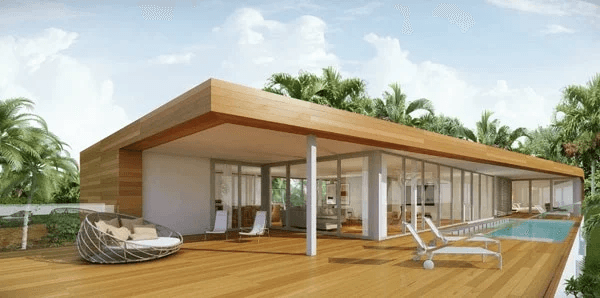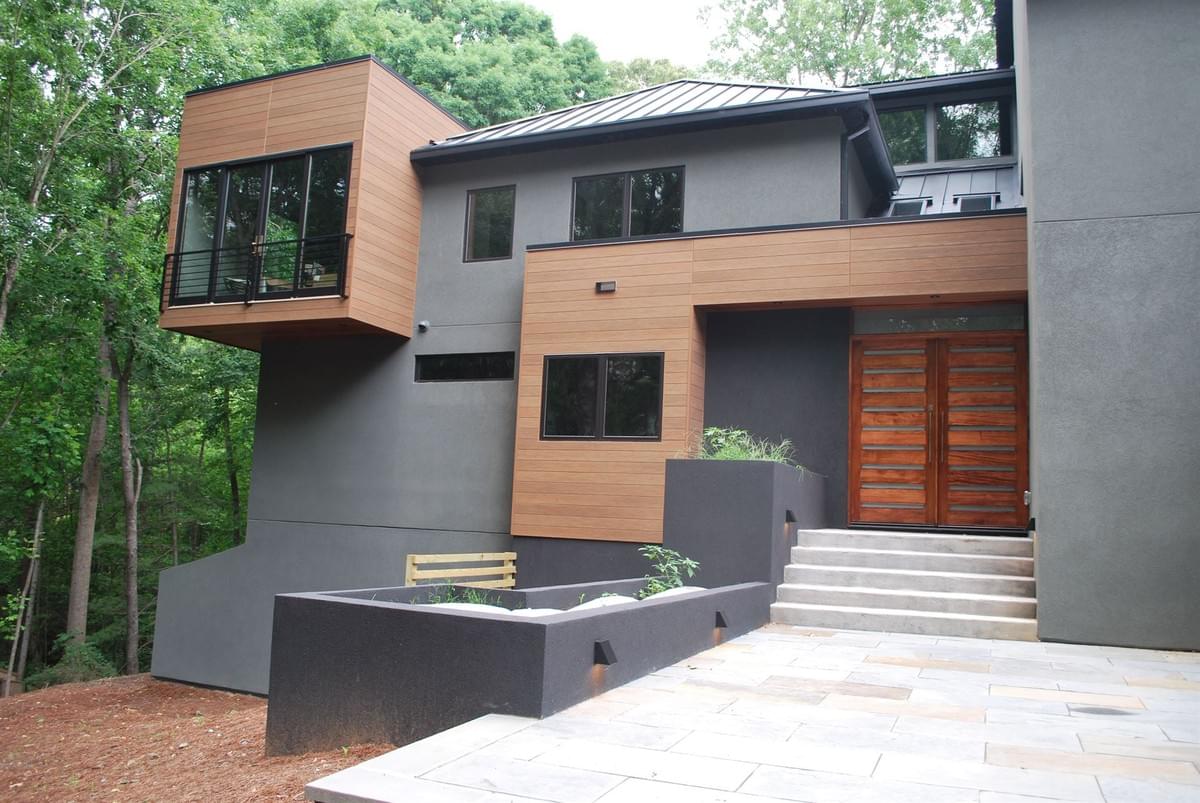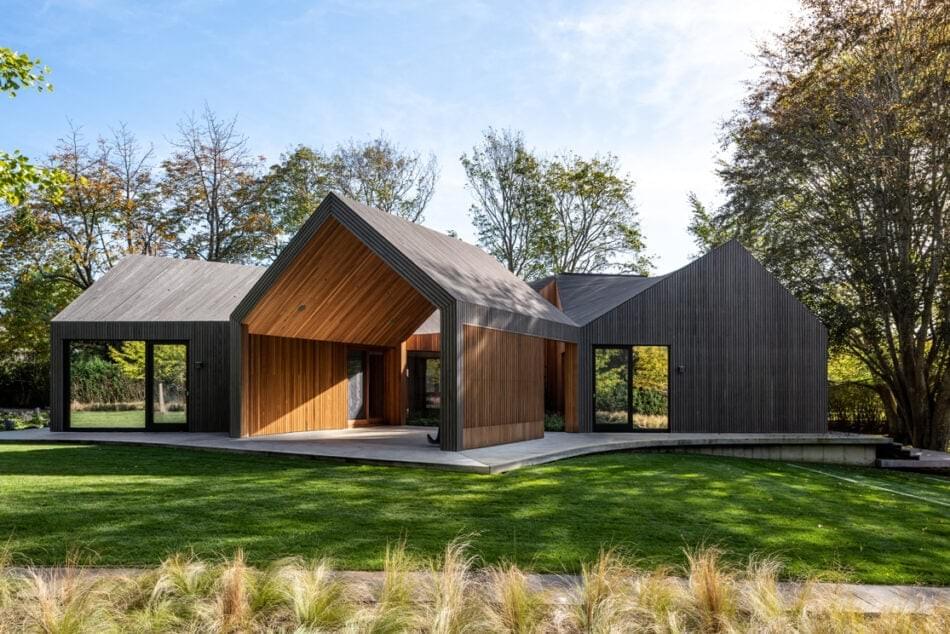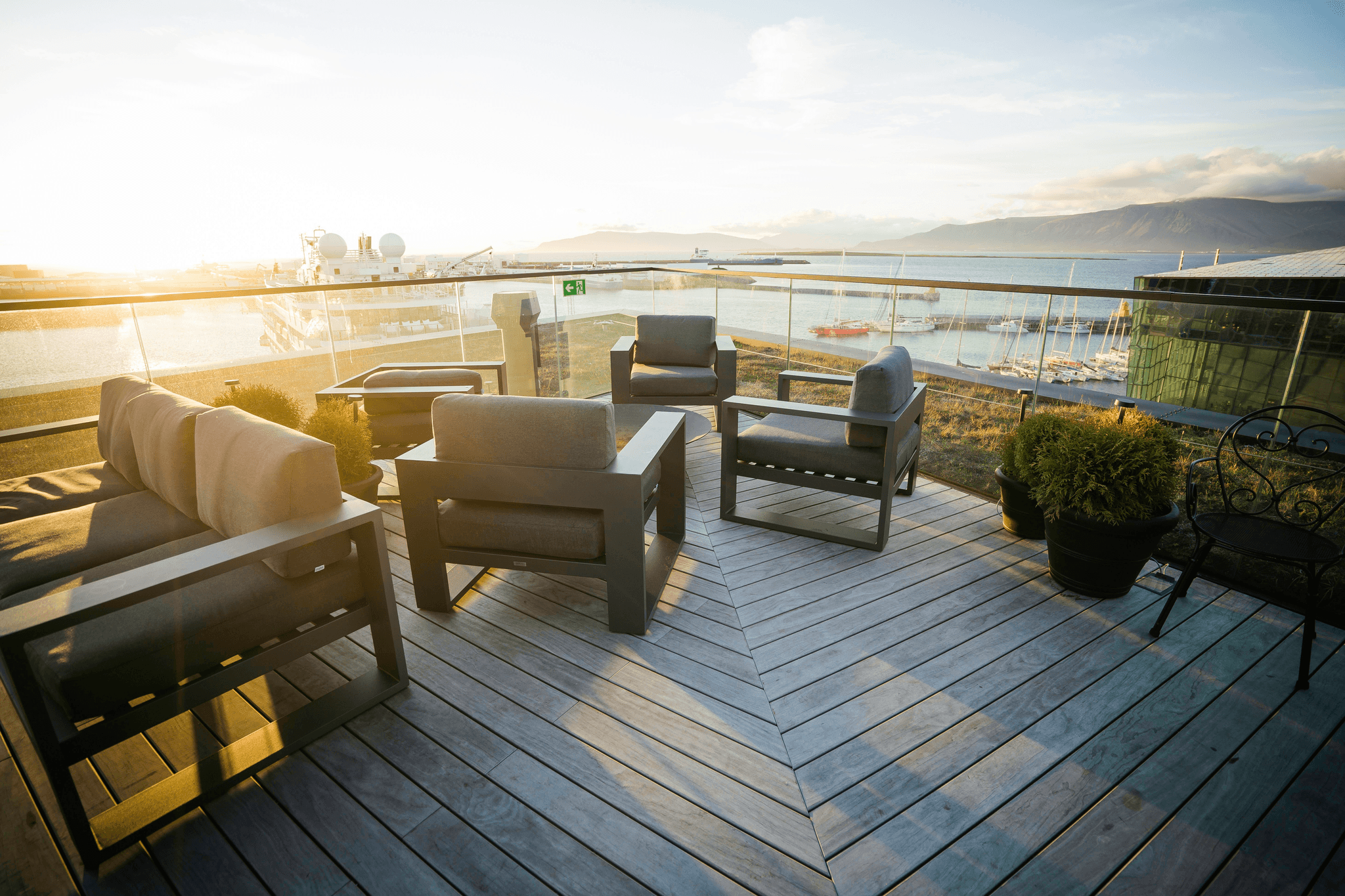Introduction
Understanding the various types of wood siding available can help you make an informed decision that suits both your aesthetic preferences and practical needs. From traditional cedar to innovative engineered wood, each option offers unique benefits worth exploring.
Understanding Wood Siding Options
Navigating the world of wood siding can feel overwhelming, especially with so many choices at your fingertips. Whether you’re considering installing composite decking with clips or opting for a more traditional wooden finish, it's essential to weigh the pros and cons of each material. Knowing what’s out there empowers you to select a siding solution that not only looks great but also meets your durability and maintenance expectations.
The Beauty and Benefits of Wood
There’s something undeniably charming about wood siding; its natural beauty adds warmth and character to any home. Beyond aesthetics, wood also provides excellent insulation properties, keeping your home cozy in winter while remaining cool during summer months. Additionally, with proper care and maintenance—like regular staining or sealing—you can enjoy the timeless appeal of wood for years to come.
Durability Factors to Consider
While beautiful, it's crucial to consider durability when selecting your siding material; after all, it has to withstand the test of time and elements! Factors such as climate, exposure to moisture, and pests play significant roles in how long your chosen material will last. For those leaning towards composite decking installation as an alternative or complement to wood siding, understanding how these materials fare against environmental stressors is key in making a wise investment for your home.
Types of Wood Siding

Cedar vs. Redwood: Which is Better?
Cedar and redwood are two of the most popular choices for wood siding, but which one reigns supreme? Cedar is known for its natural resistance to moisture and insects, making it a durable option that requires less maintenance over time. On the other hand, redwood boasts a rich color and beautiful grain patterns that many homeowners find irresistible; however, it often comes with a higher price tag and may require more upkeep.
Ultimately, the decision between cedar and redwood may depend on your aesthetic preferences and budget considerations. If you’re leaning towards a more cost-effective solution with great durability, cedar might be your best bet. However, if you’re looking to make a statement with stunning visuals and don’t mind investing a bit more in maintenance down the line, redwood could be worth every penny.
Engineered Wood Siding Explained
Engineered wood siding offers an innovative alternative to traditional solid wood options while still providing that classic look many homeowners desire. This material is made from real wood fibers combined with adhesives to create boards that resist warping and splitting better than their solid counterparts. The result? A product that not only mimics the beauty of natural wood but also enhances durability—perfect for those considering installing composite decking with clips nearby.
One major advantage of engineered wood siding is its lower environmental impact; it's often made from fast-growing trees or recycled materials, making it a sustainable choice for eco-conscious homeowners. Additionally, this type of siding typically requires less maintenance than traditional wood while still allowing for various finishes and colors to enhance curb appeal. So if you want both beauty and practicality in one package without sacrificing style or sustainability—engineered wood siding could be your winning ticket!
Vinyl vs. Wood: The Ultimate Face-Off
When comparing vinyl siding to traditional wood options like cedar or redwood, it's essential to weigh both aesthetics and functionality carefully. Vinyl tends to win points on durability—it’s resistant to rot, insects, and fading—but some argue it lacks the warmth of real wood when it comes down to visual appeal. If you're aiming for low-maintenance living without compromising too much on style (and perhaps considering composite decking installation as part of your project), vinyl might catch your eye.
However, if you're someone who values authenticity over convenience—or simply loves the idea of enhancing your home's character through natural materials—then opting for wooden siding could be more satisfying in the long run! Just remember: if you choose vinyl but later decide you want that authentic wooden charm paired with composite decking materials in outdoor spaces—you might end up feeling like you've missed out on something special!
In conclusion, choosing between these types of siding boils down to personal preference regarding aesthetics versus practicality—and don’t forget about how they will pair with any decking material decisions you make along the way!
Maintenance and Care

Regular maintenance not only preserves the beauty of your wood but also extends its lifespan, allowing you to enjoy its natural charm for years to come. In this section, we’ll delve into how to protect your wood siding, tackle common issues that may arise, and provide seasonal maintenance tips to keep everything looking spick and span.
How to Protect Your Wood Siding
Protecting your wood siding is essential for preventing damage from the elements and ensuring its longevity. One effective method is applying a high-quality sealant or stain every few years; this creates a barrier against moisture and UV rays that can cause fading and rot. Additionally, consider installing composite decking with clips around your home; this not only enhances curb appeal but also reduces the risk of water splashing onto your wood siding during rainstorms.
Regular inspections are crucial too—look out for signs of wear such as peeling paint or cracks in the surface. Addressing these issues promptly can save you from costly repairs down the line. Remember, while composite decking installation may require an upfront investment, it often pays off by protecting your home’s exterior over time.
Common Issues and Solutions
Despite our best efforts at maintenance, wood siding can still encounter some common problems. One frequent issue is warping due to moisture absorption; if you notice warped boards, it’s essential to replace them promptly to avoid further damage. Another concern is insect infestations—woodpeckers or termites can wreak havoc on your beautiful siding if not addressed quickly.
To combat these pests, consider using pressure-treated wood or applying insect repellent treatments during installation. If you’re dealing with mold or mildew growth due to high humidity levels, a simple solution involves using a mixture of vinegar and water for cleaning purposes—just be sure to rinse thoroughly afterward! And while you're at it, don’t forget about the benefits of composite decking; choosing composite materials reduces the likelihood of such issues since they are less susceptible to moisture damage compared to traditional wood.
Seasonal Maintenance Tips
With each changing season comes new opportunities—and challenges—for maintaining your wood siding effectively! In springtime, perform a thorough inspection after winter's wrath; check for any loose boards or signs of wear that may have developed during colder months. This is also an excellent time for power washing (at low pressure) followed by sealing or staining as needed.
Summer calls for vigilance against sun exposure; UV rays can fade paint colors over time so ensure you’re applying protective coatings regularly throughout this sunny season! As fall approaches and leaves start dropping everywhere (including onto your lovely deck), make sure you clear debris away from both sides of your home—this helps prevent moisture buildup which could lead back into those pesky issues we discussed earlier.
Enhancing Curb Appeal

Not only does it provide a warm, inviting look, but the various options available allow you to tailor your home's aesthetic to reflect your personal style. Whether you're considering a fresh coat of paint or exploring new design elements, enhancing your exterior is all about making impactful choices.
Color Choices for Wood Siding
Choosing the right color for your wood siding is crucial in setting the tone of your home. From classic whites and deep browns to vibrant blues and greens, each color can evoke different feelings and harmonize with nature or stand out in a neighborhood. Don’t forget about the finish—stains can bring out the natural grain of the wood while paint offers a more uniform look; both can significantly affect how you feel when you come home.
Consider how your color choice interacts with other elements of your home’s exterior, including roofing and landscaping. For instance, lighter colors can make a space feel larger and more open, while darker shades add depth and sophistication. Remember that maintaining that beautiful hue will require some upkeep—so think ahead about how much maintenance you're willing to commit to.
Creative Design Ideas for Your Home
Once you've settled on color choices for your wood siding, it's time to get creative! Think outside the box by incorporating different siding styles such as board-and-batten or shiplap; these designs add texture and visual interest that standard horizontal boards might lack. You could also mix materials by pairing wood siding with stone or brick accents for an eye-catching contrast that elevates your home's overall appearance.
Another idea is using architectural details like gables or dormers painted in complementary colors to draw attention upward and create an intriguing silhouette against the sky. And let’s not forget about outdoor living spaces—consider installing composite decking with clips around patios or balconies; this not only enhances usability but also creates an inviting atmosphere for gatherings while seamlessly blending with wood elements.
Adding Trim and Accessories
To truly elevate your curb appeal, don’t overlook the power of trim and accessories! Decorative elements such as window boxes, shutters, or molding can frame windows beautifully while adding character to plain surfaces of wood siding. Plus, contrasting colors in these features can create striking visuals that draw attention without overwhelming the main structure.
Lighting plays a key role too—installing outdoor sconces or string lights around porches creates warmth during evening hours while emphasizing architectural details during daylight hours. Lastly, consider landscaping accessories like planters filled with vibrant flowers near entrances; they provide pops of color against wooden exteriors while complementing any decking material you choose.
Installing Composite Decking with Clips

If you're considering upgrading your outdoor space, installing composite decking with clips is a fantastic choice. Composite decking offers the beauty of wood without the constant upkeep, making it a popular option for homeowners who want to enjoy their deck without the hassle. With various colors and textures available, this decking material can elevate your backyard while being environmentally friendly.
Benefits of Composite Decking Materials
Composite decking materials are known for their durability and resistance to weather elements, which means they won't warp or splinter like traditional wood. When you opt for composite decking, you also benefit from lower maintenance costs since it doesn't require staining or sealing like wood does. Plus, many composite products are made from recycled materials, making them an eco-conscious choice that helps reduce waste.
Steps for Proper Installation
Next, lay out the composite boards according to your design plan and use hidden fasteners or clips to secure them in place—this not only creates a seamless look but also enhances safety by eliminating exposed screws.
Once you've secured the boards properly during the composite decking installation process, make sure to leave adequate gaps between each plank for expansion and drainage purposes. After you've completed laying down all the boards, inspect everything carefully to ensure all clips are secure and there are no loose ends—your future self will thank you!
Maintenance Tips for Longevity
To keep your composite decking looking fresh and vibrant over time, regular cleaning is essential. Simply wash it down with soap and water periodically to remove dirt and grime; this quick maintenance routine can extend its lifespan significantly! Additionally, avoid using harsh chemicals or power washers as they can damage the surface of your beautiful new deck.
If you notice any stains or mildew developing on your composite deck, don't panic! Most stains can be easily removed with gentle scrubbing using warm soapy water or specialized cleaners designed specifically for composite materials. By following these maintenance tips diligently after installing composite decking with clips, you'll be able to enjoy a stunning outdoor space for years to come!
Comparing Costs

When it comes to choosing between wood and composite materials for your home, understanding the cost implications is crucial. While wood siding may offer a classic aesthetic appeal, the price can vary significantly based on the type of wood selected and its treatment. On the other hand, composite decking materials often present a more budget-friendly option upfront, especially when considering long-term maintenance costs.
Price Breakdown: Wood vs. Composite
The initial cost of wood siding can be higher than that of composite decking options, particularly if you opt for premium woods like cedar or redwood. These woods not only enhance curb appeal but also come with their own set of maintenance requirements that can add to long-term expenses. In contrast, installing composite decking with clips typically involves lower material costs and reduced labor since many homeowners find DIY installation manageable.
Composite decking installation can be straightforward, often requiring fewer tools and less time than traditional wood siding applications. However, it’s essential to factor in the longevity of both materials; while wood may need regular upkeep such as staining or sealing every few years, composite decking generally offers greater durability with minimal attention required over time. Ultimately, the choice between these two options often boils down to personal preference and financial considerations.
Long-Term Value Considerations
When assessing long-term value, it's important to look beyond initial costs and consider factors such as lifespan and maintenance needs associated with each material type. Wood siding can last several decades if properly maintained but may incur ongoing expenses related to repairs or refinishing due to weathering effects over time. Composite decking materials are engineered for resilience against rot and pests, making them a low-maintenance alternative that holds value in the long run.
Investing in quality composite decking means fewer worries about deterioration or replacement costs down the line—an appealing prospect for many homeowners looking for hassle-free outdoor living spaces. Moreover, some manufacturers offer warranties on their products that extend up to 25 years or more; this added peace of mind is a significant plus when considering your overall investment in home improvement projects like installing composite decking with clips.
Budgeting for Your Project
Budgeting for your project requires careful planning and consideration of all potential costs involved in both materials and labor—especially if you're leaning toward installing composite decking with clips as your primary choice. Start by creating an itemized list that includes not just the cost of materials but also any necessary tools or equipment you might need for installation or maintenance down the road. Don't forget to allocate funds for unexpected expenses; having a buffer will ensure you're prepared should anything go awry during your project.
Whether you decide on traditional wood siding or modern composite options will ultimately depend on your budgetary constraints and personal preferences regarding aesthetics versus practicality. Remember that investing wisely now can save you money later; opting for durable composite decking could mean fewer repairs over time compared to maintaining natural wood products regularly exposed to harsh elements. So take some time before diving into your project—evaluate all aspects carefully so you end up with a beautiful exterior that's easy on both eyes and wallet!
Conclusion
In summary, the choice of siding for your home is a significant decision that impacts both aesthetics and functionality. Wood siding offers timeless beauty and a natural appeal, while also requiring regular maintenance to keep it looking its best. On the other hand, composite decking materials provide an innovative solution that combines durability with low upkeep, making them an attractive option for homeowners today.
Key Takeaways on Wood Siding
Wood siding is not just about looks; it brings warmth and character to any home. However, it's essential to consider factors like climate and maintenance requirements when choosing wood as your primary siding material. Remember, while wood can be beautiful, it does come with its own set of challenges—so be prepared for some elbow grease!
The Role of Composite Decking
Composite decking has revolutionized outdoor spaces by offering a robust alternative to traditional wooden decking materials. When you're installing composite decking with clips, you’re opting for an easier installation process that saves time and reduces the hassle often associated with wood. Plus, this type of decking material is designed to withstand the elements without fading or warping—perfect for those who want a beautiful deck without constant upkeep.
Choosing the Right Material for Your Home
Ultimately, selecting between wood siding and composite decking boils down to personal preference and lifestyle needs. If you love the classic charm of wood but are wary of the upkeep, consider integrating composite materials into your design plans—like installing composite decking with clips on your patio or deck area! Whether you go for rustic wood or modern composite options, ensure you choose what best suits your taste and complements your home’s architecture.
